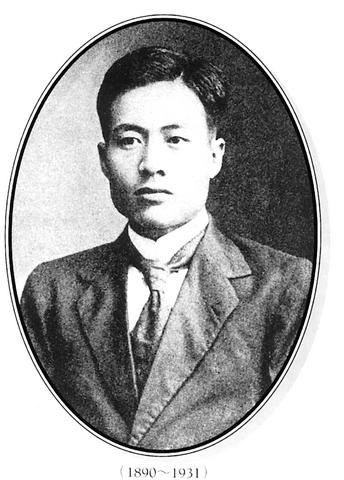Who are the people who established the foundations of Taiwan's modernization at the beginning of the 20th century? Who are the heroes of Taiwan's fight against the Japanese colonial regime? Who are the foreigners who showed more love for this land than many Taiwanese? It is their story that will be told in a TV series titled A Century of Outstanding People in Taiwan (台灣百年人物誌) to air on the Public Television Service (PTS) starting Tuesday.
It took PTS more than two years to produce such a large-scale historical documentary series. It is the first time PTS has chosen to air a documentary series during its prime time 8pm to 9pm, Monday to Friday time slot.
Thirty influential people from the last century are to be featured in the series, with each episode featuring one person's life. The first two episodes feature political movement pioneers Lin Hsien-tang (林獻堂) and Chiang Wei-shui (蔣渭水). In the 1920s, under Japanese rule, the two set up the Taiwan National Council and the Taiwan People's Party respectively, the first political parties to be established in Taiwan. They were the first people who sought to lift the status of Taiwanese during the Japanese occupation period through the creation of democratic political movements.

PHOTO COURTESY OF PTS
Lin also set up the Taiwan Culture Association which brought together Taiwan's cultural and intellectual elite in a forum for the promotion of Taiwanese culture.
Also featured in the series is George Leslie Mackay the first missionary to work in northern Taiwan. His name is still common currency among Taiwanese, associated as it is with the Mackay Memorial Hospitals. Less well known are his contributions to modern education in Taiwan.
For the first time in this type of historical documentary, three Japanese have been included on the honor roll. They include Shimpei Goto, who was the first Japanese governor of Taiwan. It was he who commissioned the first large-scale survey of Taiwan's folk culture. He also established the foundations of Taiwan's modern railway and industry.
Then there is Yoichi Hatta, a Japanese engineer who spent 20 years building the Chiayi-Tainan canal, at the time the largest irrigation project in Asia.
This project transformed the area covered by thecounties of Chiayi and Tainan from barren wilderness to the largest rice provider in Southeast Asia.
Finally there is Kanori Ino, who was the first anthropologist to investigate Taiwan's Aborigines and who wrote the world's first ethnography of Taiwan's Aboriginal people.
A Century of Outstanding People in Taiwan will air on PTS at 8pm on Tuesday.

Most heroes are remembered for the battles they fought. Taiwan’s Black Bat Squadron is remembered for flying into Chinese airspace 838 times between 1953 and 1967, and for the 148 men whose sacrifice bought the intelligence that kept Taiwan secure. Two-thirds of the squadron died carrying out missions most people wouldn’t learn about for another 40 years. The squadron lost 15 aircraft and 148 crew members over those 14 years, making it the deadliest unit in Taiwan’s military history by casualty rate. They flew at night, often at low altitudes, straight into some of the most heavily defended airspace in Asia.

This month the government ordered a one-year block of Xiaohongshu (小紅書) or Rednote, a Chinese social media platform with more than 3 million users in Taiwan. The government pointed to widespread fraud activity on the platform, along with cybersecurity failures. Officials said that they had reached out to the company and asked it to change. However, they received no response. The pro-China parties, the Chinese Nationalist Party (KMT) and Taiwan People’s Party (TPP), immediately swung into action, denouncing the ban as an attack on free speech. This “free speech” claim was then echoed by the People’s Republic of China (PRC),

Many people in Taiwan first learned about universal basic income (UBI) — the idea that the government should provide regular, no-strings-attached payments to each citizen — in 2019. While seeking the Democratic nomination for the 2020 US presidential election, Andrew Yang, a politician of Taiwanese descent, said that, if elected, he’d institute a UBI of US$1,000 per month to “get the economic boot off of people’s throats, allowing them to lift their heads up, breathe, and get excited for the future.” His campaign petered out, but the concept of UBI hasn’t gone away. Throughout the industrialized world, there are fears that

Like much in the world today, theater has experienced major disruptions over the six years since COVID-19. The pandemic, the war in Ukraine and social media have created a new normal of geopolitical and information uncertainty, and the performing arts are not immune to these effects. “Ten years ago people wanted to come to the theater to engage with important issues, but now the Internet allows them to engage with those issues powerfully and immediately,” said Faith Tan, programming director of the Esplanade in Singapore, speaking last week in Japan. “One reaction to unpredictability has been a renewed emphasis on